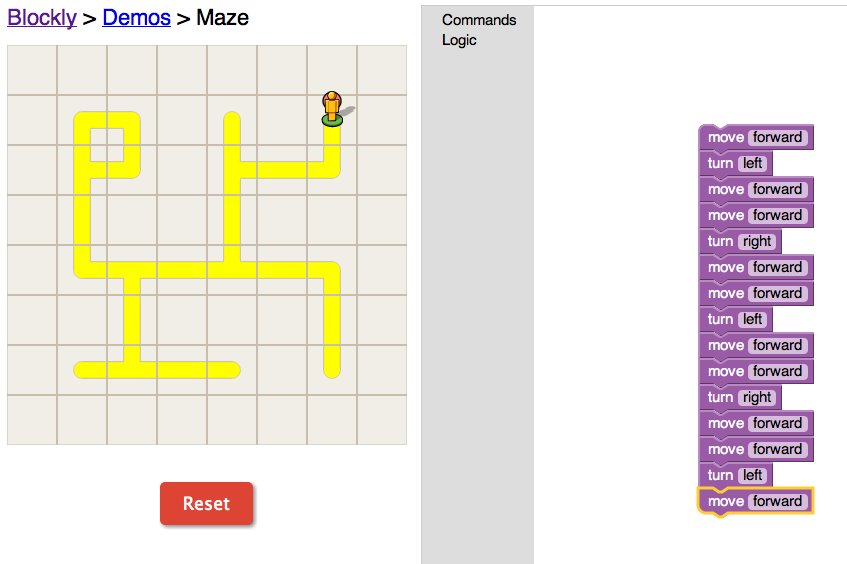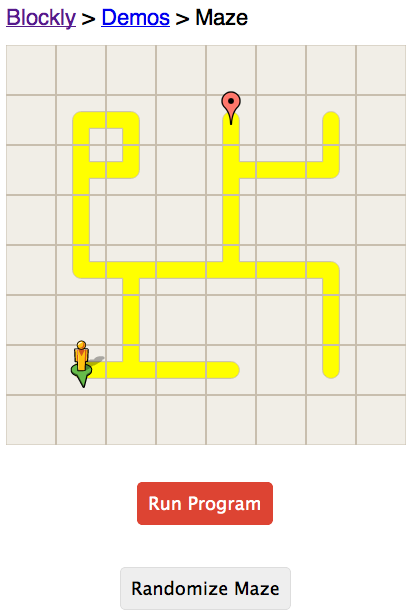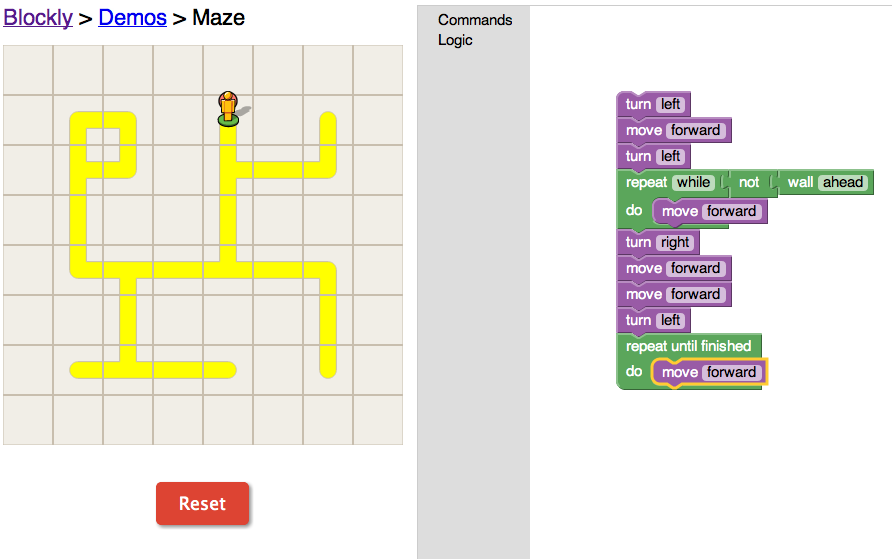Monday before class i decided to check out the Blockly website. The title said that it was a puzzle, and as someone who loves to do puzzles i was very excited. After 15 minutes my mind was still utterly perplexed by the fact that I only had one command and I could only switch it to forward and backward. I tried to randomize, I tried both of my limiting options and I finally gave up. I had been stumped! So I went to class feeling defeat.
Something must have gone wrong with my mind on monday morning, because as soon as we started to discuss blockly in class I realized that I had missed the command and logic portions. As professor Cohen was explaining how to use it in class the puzzle-solver in me raced to find the solution before he told the class and ruined the excitement! In a dash I came up with a straight forward and simple solution. Only use the forward, left and right comamnds
Feeling a slight sense of redemption I tried to get fancy with the logic commands, but I found them somewhat frustrating to use, so to change it up I hit randomize.
Here was my next challenge
I played around with a lot of different options, but I was just trying to use the command logic. If I was trying to find the shortest path to the goal point than I could have used some other commands, but I was unable to find much that was useful to me in my goal of finishing as soon as possible.
Overall, I thought that this program was decently fun and it helped me to understand the concept of basic programming.





